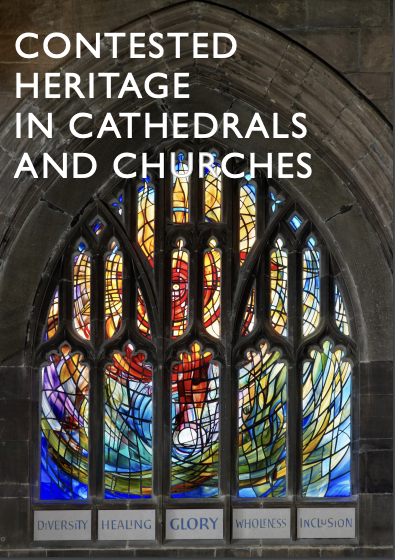The Contested Heritage in Cathedrals and Churches guidance addresses concerns over memorials with links to slavery and other ‘contested heritage’, and has been published on Tuesday 11 May by the Church of England.
It enables churches and cathedrals to consider the history of their buildings and congregations, and to engage with everyone in their community to understand how physical artefacts may impact their mission and worship. It offers a framework to approach such questions locally and, where necessary, to engage with the relevant bodies who oversee changes to cathedral and church buildings.
The guidance also mentions that a number of churches and cathedrals are already in the process of researching, consulting and considering the place of monuments, statues and memorials, and these experiences have helped to inform the guidance.
This includes consideration given in Bristol Cathedral to dedications to Edward Colston. The Cathedral obtained permission to remove elements of a stained glass window recording a dedication to Colston, which have been retained for future educational or display use. Prominent references were also removed from the windows of St Mary Redcliffe Church.
The Dean of Bristol, the Very Rev’d Mandy Ford, said:
“As a Cathedral and a city, in Bristol we know first-hand the strength of feeling surrounding issues of contested heritage. As we seek to find ways to honour those whose stories are untold and to give voice to communities that have suffered injustice, this guidance will be invaluable.
“It recognises the complexities we experience as the beneficiaries of past exploitation and our need to understand the experience of those who continue to feel the pain of that exploitation.
“In Bristol Cathedral we are committed to moving forward, not to obliterate history, but to restore and repair our relationships with those whose history is not yet expressed in our building.”
The removal of the windows is just one step on an important journey for the diocese in our discussions and work around the trans-Atlantic slave trade, racism, identity and justice. The Bishop of Bristol, the Right Rev’d Vivienne Faull, has set out her commitments that will form the basis of our work and focus over the coming weeks, months and years.
The Guidance on Contested Heritage has been informed by a wide-ranging consultation which has included every Church of England diocese and cathedral, as well as heritage bodies, specialists in church monuments, and those with an interest and specialism in UK minority ethnic representation in the Church of England.
It notes that while churches and cathedrals are, above all, places dedicated to the worship of God, for a range of reasons, members of communities may not always feel welcome in these buildings. One such reason could be the presence of objects commemorating people responsible for the oppression and marginalisation of others.
The guidance specifically addresses the issue of heritage associated with racism and the slave trade – including plaques, statues, inscriptions and other monuments, but hopes that by doing so it will establish a methodology which can be used for other forms of contested heritage.
The guidance does not prescribe solutions, but presents a range of options and considerations, together with suggested models for local consultation and discussion. It follows last month’s report from the Archbishops’ Anti-Racism Taskforce, which suggested that the forthcoming Archbishops’ Racial Justice Commission should “…take decisive action to address the history and legacy of the Church of England’s involvement in the historic transatlantic slave trade.”
Notes for parishes and cathedrals:
- There is a brief guide to this framework which should help churches to assess if this is something they will find it helpful to engage with as they consider issues of contested heritage.
- The long guidance contains a more thorough discussion of the issues and considers the possible options for change in more detail. It should be consulted by any church or cathedral considering taking action to address one or more items of contested heritage in their building.
- The primary focus is items connected with the transatlantic slave trade and racism, although the framework proposed would work for other contested heritage issues.
- We know that churches and cathedrals are currently dealing with a lot of pressures, not least of which is recovery from the pandemic and continuing to support their communities. Any church or cathedral considering issues of contested heritage can get support from the national buildings team. We encourage them to contact their DAC or cathedral FAC in the first instance so ensure that local and national support networks can work together.
